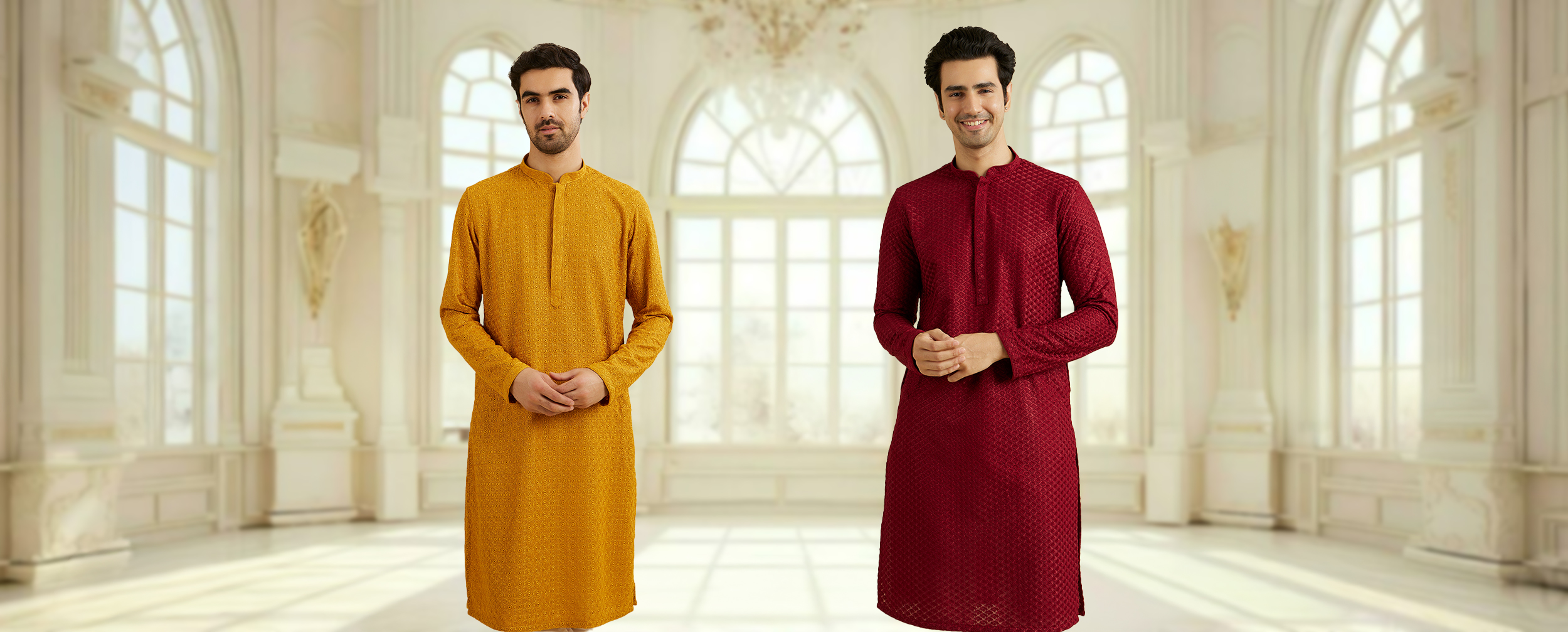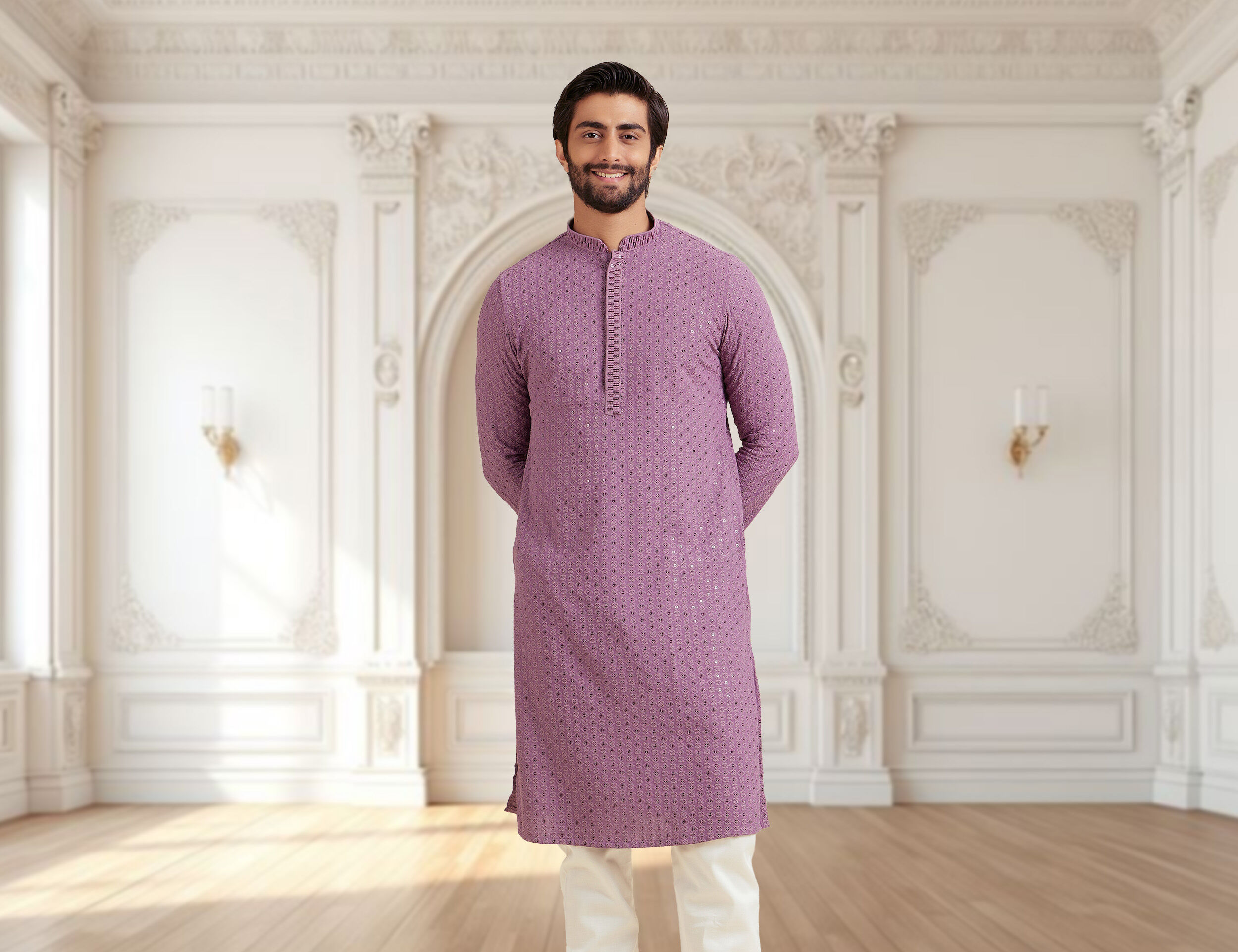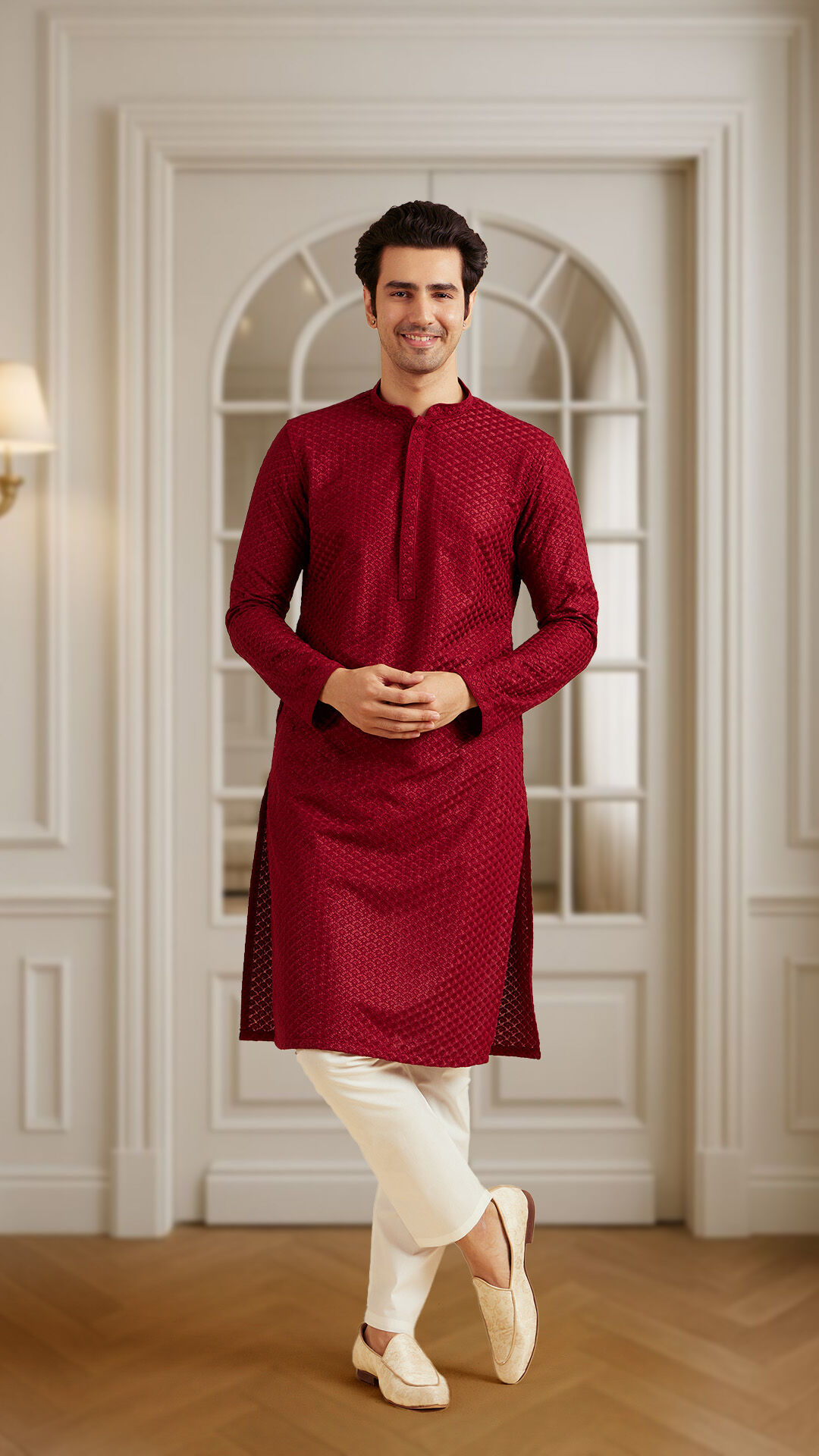STORIES BY MANYAVAR & MOHEY

Lifestyle
The Artisanal Magic of Chikankari: Styling Green Kurtas for Men
Date 12 August 2025 Reading time: 7-10 mins
Shaadi season is upon us, and you know what that means—it's time to amp up your festive wear game! But if you're bored of the same old kurtas hanging in your closet and want to make a sartorial splash at your friend's or family member's wedding without going too over-the-top, we've got just the thing for you—the evergreen charm of a green chikankari kurta.
But what makes chikankari embroidery so special? Is it the painstaking hours of handwork that go into each piece? The gossamer-thin fabrics that lend an air of understated luxury? Or the way it effortlessly blends tradition with contemporary style? Let's dive deeper into the fascinating world of chikankari kurtas and find out!
The History and Origin of Chikankari Embroidery
Chikankari, derived from the Persian word 'chikan,' meaning embroidery, is believed to have been introduced to India by Nur Jahan, the wife of Mughal emperor Jahangir, in the 16th century. The art form flourished under royal patronage, with the most skilled artisans creating exquisite pieces for the Nawabs and their families.
Traditionally done on fine muslin or cotton fabric using white thread, chikankari embroidery involves a variety of stitches, each with its own unique character. From the delicate tepchi (running stitch) outlining the design, to the intricate phanda and murri stitches that create stunning floral patterns, to the lace-like jaali work, every element comes together harmoniously in a chikankari kurta.
The Process of Creating a Chikankari Kurta
Wondering how your favourite chikankari kurta for men is made? It all starts with the fabric—usually a breathable, lightweight cotton or cotton-silk blend that's perfect for India's balmy weather. The design is first traced onto the fabric using block printing or stencilling.
Then, the magic begins! Skilled artisans, usually women from in and around Lucknow, start embroidering the design using a needle and thread. It can take anywhere from a week to several months to complete one kurta, depending on the intricacy of the design and the number of stitches used.
Once the embroidery is done, the kurta is washed to remove any traces of the print and starch, resulting in a soft, supple fabric with a beautiful, slightly crinkled texture that's synonymous with chikankari. A few finishing touches later, and voila—your kurta for men is ready to make heads turn!
The Art Behind the Intricate Chikankari Embroidery
But chikankari embroidery is so much more than just a handicraft. It's a labour of love, a testament to the skill and dedication of the artisans who have been keeping this art form alive for generations. Each stitch is a masterclass in precision and patience, each motif a nod to the rich cultural heritage of the region.
From the classic butis and paisleys to more contemporary geometric patterns, these traditional embroidery techniques are constantly evolving to suit modern tastes. But what remains constant is the attention to detail and the sheer beauty of the craft.
Traditional Embroidery Techniques Used in Chikankari
One of the things that sets chikankari apart from other embroidery styles is the sheer variety of stitches used. Some of the most common ones include:
- Tepchi: A simple running stitch used to outline the design
- Bakhiya: A double-back stitch that creates a fine shadow effect
- Hool: A tiny eyelet stitch used to create delicate flower petals
- Zanzeera: A chain stitch often used to fill in leaves and vines
- Rahet: A stem stitch used for creating curvy lines and stems
- Banarasi: A twisted stitch used to create a rope-like effect
Each of these traditional embroidery techniques adds a unique dimension to the overall design, creating a stunning interplay of textures and patterns that's sure to catch the eye.
The Rise of Green Chikankari Kurta in Fashion
While chikankari has always been a timeless classic, there's one particular style that's been making waves in the fashion world lately—the green chikankari kurta. From soft mint to deep emerald, this verdant hue has been popping up everywhere, from runway shows to celebrity weddings.
And it's not hard to see why. Green is a universally flattering colour that looks great on all skin tones. It's also a refreshing change from the usual whites and creams that chikankari is known for, adding a pop of colour to your festive wardrobe.
Why Green Chikankari Kurta is a Must-Have in Your Wardrobe
- Versatility: Whether you're attending a friend's mehendi, a sangeet night, or even a casual family get-together, a green chikankari kurta is appropriate for all occasions. Dress it up with a silk dhoti or dress it down with a pair of jeans—it's a style chameleon that adapts to any setting.
- Comfort: Made from breathable fabrics like cotton and silk, chikankari kurtas are perfect for India's hot and humid climate. The loose, flowy silhouette allows for easy movement and keeps you cool and comfortable all day long.
- Elegance: There's something undeniably regal about a well-crafted chikankari kurta. The intricate embroidery, the rich hue of green, the luxurious fabric—it all comes together to create a look that's equal parts sophisticated and understated.
- Heritage value: When you wear a green chikankari kurta, you're not just making a fashion statement—you're celebrating a centuries-old craft that's an integral part of our cultural heritage.
How to Style a Green Chikankari Kurta
Now that you're sold on the idea of adding a green chikankari kurta to your wardrobe, let's talk about how to style it for maximum impact. Here are a few tips and tricks to keep in mind:
- Keep it simple: Chikankari is a delicate craft that speaks for itself. Avoid overwhelming the embroidery with too many accessories or loud prints. A simple pair of juttis and a classic watch are all you need to complete the look.
- Play with contrast: If you want to make your green kurta pop, try pairing it with contrasting bottoms like white churidars or cream dhotis. The stark contrast will draw attention to the intricate embroidery and make the green really stand out.
- Layer it up: For a more contemporary twist, try layering your chikankari kurta with a sleeveless Nehru jacket or a short bandhgala. It's a great way to add some structure to the look and make it more evening-appropriate.
- Experiment with silhouettes: While a classic straight-cut kurta is always a safe bet, don't be afraid to experiment with different silhouettes like an A-line or asymmetric hem. It's a subtle way to update a conventional look and make it feel more modern.
Looking for some inspiration? Check out Manyavar's stunning collection of chikankari kurtas for men—from classic white to trendy greens; we've got a style for every occasion.
The Timeless Appeal of Chikankari Embroidery
In a world of fast fashion and fleeting trends, chikankari embroidery is a reminder of the enduring power of craftsmanship. It's a testament to the skill and dedication of the artisans who have been keeping this art form alive for generations and a celebration of our rich cultural heritage.
So the next time you're looking to make a sartorial statement at a wedding or festival, consider investing in a chikankari kurta set. Not only will you be adding a timeless piece to your wardrobe, but you'll also be supporting a centuries-old craft that deserves to be cherished and preserved.
Visit Manyavar for a wide selection of chikankari kurtas, sherwanis, and more. With our exquisite craftsmanship, attention to detail, and commitment to preserving traditional embroidery techniques, our men's collections will make you stand out from the crowd. So go ahead—embrace the magic of chikankari and let your style do the talking!







